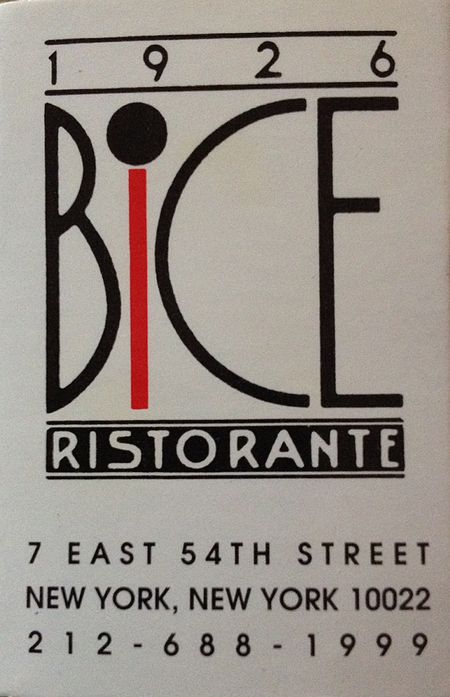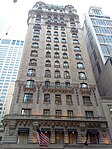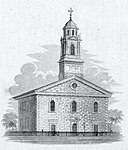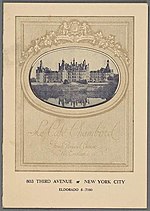BiCE Ristorante
1987 establishments in New York CityDefunct Italian restaurantsItalian-American culture in New York CityItalian restaurants in New York (state)Midtown Manhattan ... and 2 more
Restaurants in ManhattanUse mdy dates from September 2013

BiCE Ristorante (or known simply as BiCE) was an Italian restaurant located in New York City. Opening in 1987, the restaurant was popular with an upscale New York City clientele. It was described, soon after opening, by The New York Times as being "too chic, too crowded, too self-consciously European—yet everyone wants to visit." The restaurant almost closed in 2011 due to financial troubles. Crain's New York Business called BiCE an "institution". The original BiCE closed in 2014, but has since returned to New York City under the name BiCE Cucina.
Excerpt from the Wikipedia article BiCE Ristorante (License: CC BY-SA 3.0, Authors, Images).BiCE Ristorante
East 54th Street, New York Manhattan
Geographical coordinates (GPS) Address Nearby Places Show on map
Geographical coordinates (GPS)
| Latitude | Longitude |
|---|---|
| N 40.76104 ° | E -73.97441 ° |
Address
East 54th Street 3
10022 New York, Manhattan
New York, United States
Open on Google Maps






